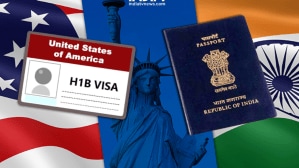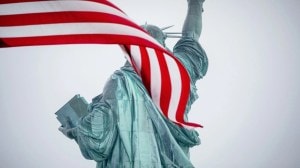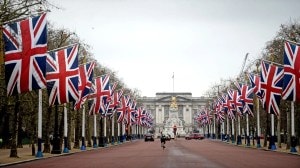In the opening monologue of Iron Man 3, the movie’s protagonist Tony Stark said, “We create our own demons”. It seems that he couldn’t have been more correct. While digital advancements have helped us, these have also created vulnerabilities to deal with. One of the strongest cases has been of the recent issues surrounding deepfakes. Even as, at the moment, celebrities are at the receiving end of it, analysts feel that in the run-up to the General Election, there is a high probability of the spread of misinformation using deepfakes of political leaders. “In countries such as India, where misinformation is apparently central to all political communications, this presents another challenge for the voters to make decisions. Campaign machinery with seemingly infinite resources can potentially drown other parties in targeted disinformation, and control not just the narrative of the election but to an extent even its outcome,” Asbah Farooqui, director, Escalent, a data analytics and advisory firm, and former head, communications and research, Indian Political Action Committee (IPAC), a political advocacy group, told FE TransformX.
Think before you vote?!
Concerns around falsified data seem to have always been an unavoidable problem. With AI applications in the picture, these issues are believed to have witnessed an upward trend. In the latest context, elections, which create the roots for a country’s democracy, have seemingly become susceptible to increased threats on account of deepfakes. Market experts believe that the alleged conundrum around political deepfake campaigns can increase disinformation, nationally and internationally. Going by market reports, deepfakes can create counterfeit audio and videos that can lead to emotional manipulation on the part of voters. Moreover, deepfakes can be used to develop wrong stories about political candidates to create suspicion in voters’ minds, which can make fake information viral on social media.
Data provided by political experts at the University of Virginia, a public research university, stated that political manipulators can create deepfake-based attack advertisements, which can decide election results at the ‘eleventh hour.’ The university’s website also mentioned how the Federal Election Commission, a government agency, gave out a public statement to prevent scam-based deepfakes, possibly before the 2024 US-based elections. Previously, deepfakes were used to digitally change pictures of former US presidents such as Donald Trump, Barack Obama, and Nancy Pelosi, former Speaker of the US House of Representatives. In 2019, US passed the Deepfake Report Act to enable the Department of Homeland Security to assess concerns and deploy preventive measures against them. Other nations, such as the United Kingdom and Australia, have also proposed similar guidelines around deepfakes in elections.
“I believe that deepfakes also reveal a truth: digitalisation is no silver bullet to stable and inclusive development. Real progress is expected to demand that public institutions evolve and state capacities grow as technology permeates our lives. And this requires political will to foster societal resilience through education. This can be the only way to fortify information societies against disinformation. And while the private sector can play a supportive role, there seem to be no shortcuts for the State,” Vivan Sharan, partner, Koan Advisory Group, a public policy research and advisory firm, highlighted.
The Indian angle!
As for India is concerned, deepfakes’ role in Indian politics has drawn a lot of flakes. Moreover, ‘The States of Deepfakes’ report by Deeptrace, a cybersecurity platform, revealed that India is ranked sixth in the list of most exposed countries to deepfakes. Reportedly, the ‘deepfake’ situation around Indian elections has become prevalent in the last couple of years. In 2020, a WhatsApp video of Manoj Tiwari, former president of Bharatiya Janata Party’s (BJP) Delhi division, went viral before Delhi’s legislative assembly elections, as per Vice News, an international news organisation. In the actual video, Tiwari directed criticism towards New Delhi Chief Minister Arvind Kejriwal and asked voters to vote for BJP in Hindi. While in the morphed videos, Tiwari was seen speaking Haryanvi and English. Vice News mentioned that Tiwari’s deepfake videos were seen by roughly 15 million people in 5,800 WhatsApp groups.
In recent developments, Prime Minister Narendra Modi spoke on how deepfakes are threatening Indian society and asked for vigilance from India’s media and citizens. At the BJP Diwali Milan programme held in New Delhi, Modi spoke on watching a deepfake video of him doing garba. Modi even spoke on the need for the ChatGPT team to caution users about the presence of deepfake content on the Internet. On November 19, 2023, Ashwini Vaishnaw, Union Minister of the Ministry of Indian Electronics & Information Technology (IT), Railways, and Communication, stated that the government will get together to address deepfake concerns. Vaishnaw also spoke on the need for social media corporations such as Google, Meta, Twitter, among others, to implement preventive measures for deepfakes. From what it’s understood, the government meeting will look to restructure clauses present in the IT Act to address deepfakes.
“I think technology platforms have an important role to play in ensuring election integrity by ensuring content takedowns in a transparent manner. The issue of deepfakes in electoral processes seems to also put into question the role of the Election Commission and the absence of regulation of political parties,” Apar Gupta, a lawyer and writer on technology and democracy, concluded.










